Have you ever noticed how steep the stairs are in old houses? It may seem like a peculiar design choice, but there’s actually an interesting reason behind it. Stairs were built to be so steep in older homes because of the materials and tools people had at their disposal when they were constructing them. In short, staircases used to be more difficult to build than they are today, so builders had to make do with what they had.
As a result, many of these historical homes have incredibly steep stairs that can be hard for modern-day visitors—especially young children or elderly folks—to navigate without assistance. But despite their daunting inclines, these staircases have stood the test of time and remain as one of the most iconic features from bygone eras. Let’s explore why stairs are so steep in old houses and how this building technique has evolved over time!
What Is Considered a Steep Staircase?
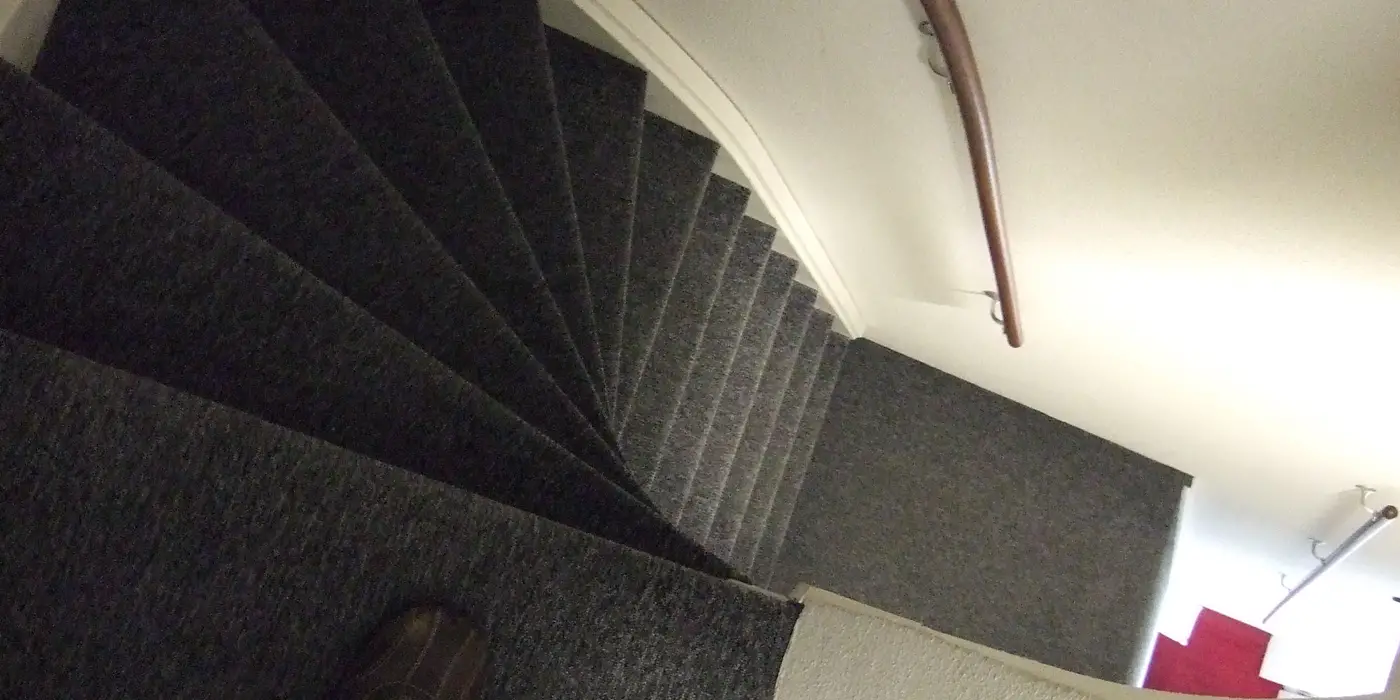
Staircases are typically considered steep if they have a rise of more than 8 inches (20 cm) and less than 10 inches (25 cm) for each step. This is much steeper than modern-day staircases, which usually have a rise of 4 to 7 inches (10 to 18 cm). So why did builders make such steep staircases in the past?
The answer lies in the tools and materials available to builders at the time. Before modern-day power saws, carpenters had to craft each step by hand using chisels and saws. This was a slower process because of the additional labor involved, which made it difficult for them to adhere to the standard rise measurements for modern staircases. To keep construction time at a minimum, builders would make each step as tall as possible so they wouldn’t have to craft too many of them. This explains why stairs in old houses are much steeper than their contemporary counterparts.
In addition to the tools used, builders had to work with lesser-quality materials compared to what is available today. Wood planks used in older homes were much thicker than modern-day boards and often warped or split over time. To compensate for this, builders used taller steps so they could fill the gap with wedges of wood or plaster if necessary. This extra step also helped keep the stairs from becoming too steep and slippery. [1]
Reasons Why Staircases In Old Houses Are So Steep
One of the features that can make an old house stand out from newer ones is its steep staircase. This design element was once very popular in homes built before the 19th century and still offers plenty of charm today. But why were staircases so steep in these older houses? There are several reasons:
Steep Stairs Save Space
One of the primary reasons why staircases in old houses are often so steep is because they save space. Before elevators and other modern forms of vertical transportation, stairs were the only way for people to move between floors, and builders had to be creative when it came to maximizing the available space. By making steps steeper, a staircase can be narrower and shorter, meaning more space can be dedicated to other uses.
Lack Of Building Codes

In the olden days, there were no specific building codes and regulations that one had to adhere to when constructing a house. This means that builders could make choices without any external constraint. One of these choices was the steepness of stairs. With nothing telling them otherwise, builders had more freedom to make the stairs as steep as they wanted, which they did in order to conserve space.
Architect Miscalculation
The steepness of stairs in old houses is often due to a miscalculation on the part of the architect.
In order to fit as many stairs as possible into a limited amount of space, they would sometimes make them too steep. This was an easy mistake to make in an era when architects didn’t have access to modern tools and technology to measure angles accurately.
No Need For Adequate Headspace
In traditional homes, staircases were usually placed in the smallest space available. This meant that there was no need for adequate headspace when people used the stairs. The result of this lack of headspace is often a very steep staircase with a shallow tread – which can make climbing the steps difficult and dangerous. By modern standards, these staircases would not meet safety guidelines and are often a hazard to homeowners. [2]
Are Steep Staircases Dangerous?
With stairs often measuring between 6 and 7 inches per step, old houses can have steep staircases.
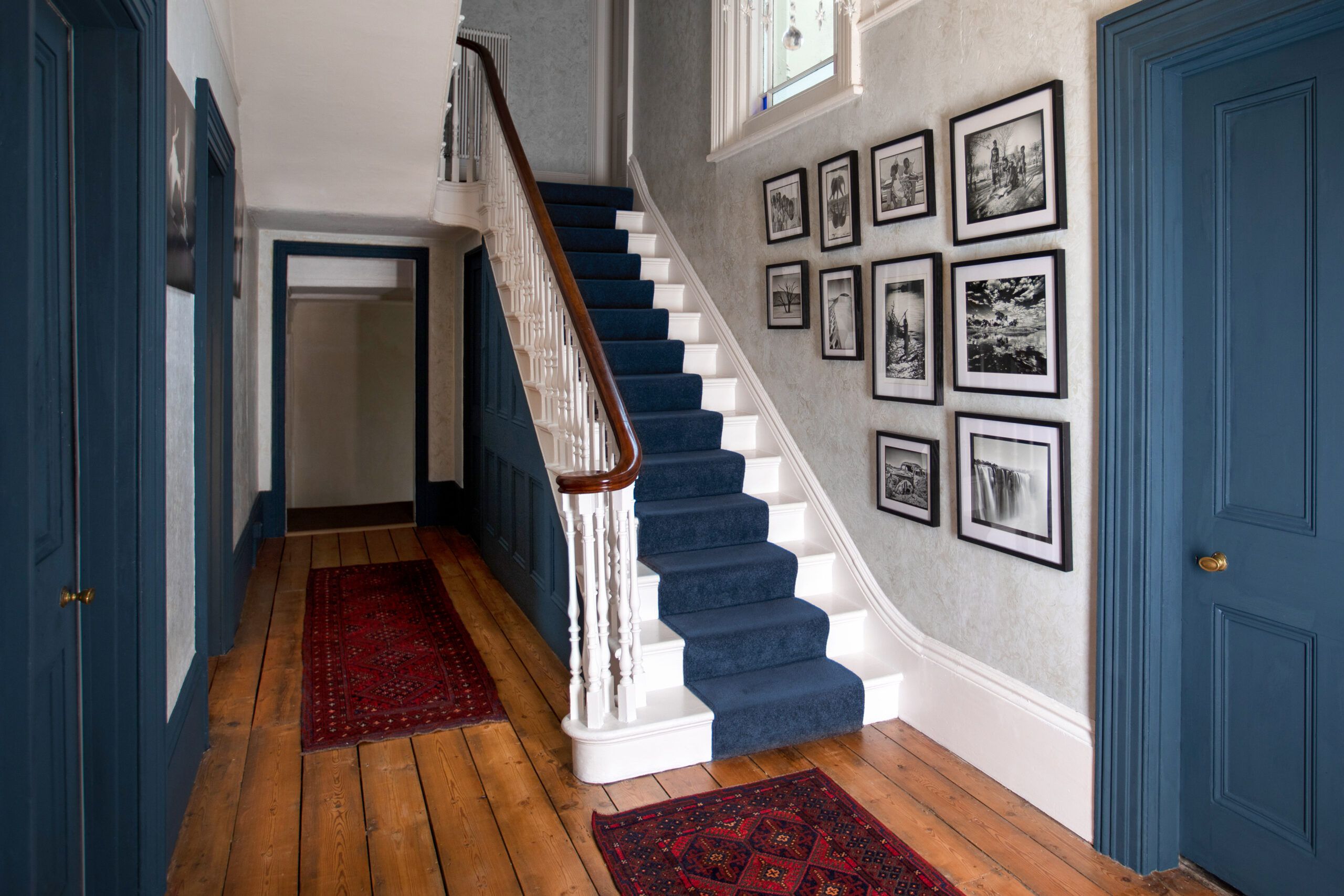
While this may provide a certain charm to the home, it can also be dangerous. The steeper the steps are, the more difficult they become to climb or descend safely. A person could easily trip on a staircase with such shallow risers due to the lack of stability they provide. This is particularly concerning for elderly people, those with physical disabilities, and small children who are more likely to lose their balance when going up or down a steep staircase.
To make these staircases safer, homeowners can install handrails and non-slip materials on the steps. Handrails provide support that can help a person maintain their balance, while non-slip materials can prevent them from slipping on the stairs. Additionally, incorporating wider steps, or risers over 7 inches can also make climbing and descending the stairs easier and less dangerous.
Is It Possible To Fix Steep Stairs?
Yes, it is possible to fix steep stairs in old houses. Depending on the situation and specific structure of the staircase, a few different approaches may be taken.
One option for fixing steep stairs is by installing a set of stair treads that are shallower than usual. This can help to create stairs that are more comfortable and safer to use. Another option is to install a ramp or lift to provide easier access for those with mobility issues.
In some cases, an entire staircase might need to be reconstructed in order to make it safer and more accessible. This can involve replacing the balustrade or handrails, increasing the width of the stairs, or adding a landing at the bottom for extra stability. This can be particularly helpful for those with mobility issues who are unable to safely navigate steep stairs.
Finally, if the staircase is in disrepair, it may need to be completely replaced with a new one that meets current safety standards and regulations. Depending on the nature of work required, this can be a costly and complicated task. [3]
Practical Options To Fix Steep Stairs
In old houses, steep stairs can be a safety hazard. Luckily, there are some practical steps you can take to make them safer and more comfortable for everyone who uses them.
Additional Landing With Switchback Steps
If you’ve ever found yourself huffing and puffing while climbing a set of stairs in an old house, there’s no need to despair. You can make the experience a lot easier on your legs by adding additional landings and/or switchback steps.
Build A New Staircase
The steep stairs in old houses can present a challenge, but they don’t have to be a hindrance. If you’re renovating an old home and want to make the staircase easier to navigate, there are several options available. One option is to build a new staircase that follows the existing one, but has shallower steps and a gentler pitch. This will make the stairs less steep and easier to climb. You can also install handrails on both sides of the staircase, which will provide additional support and stability while navigating the steps.
Finally, you may want to add lighting along the stairs so it’s easier to see where your feet are going in dimly lit areas. With these modifications, you can make the stairs in your old house much more manageable and accessible.
The process of renovating an old staircase is complicated and requires a lot of planning and expertise, so it’s best to consult with a professional before making any changes. An experienced contractor will be able to assess the existing structure and recommend the best course of action for making the stairs safer and more comfortable.[4]
FAQ
Why are Victorian stairs so steep?
The answer to why Victorian stairs are so steep lies in the era when they were built. At the time, it was common for homes to have two floors, and materials were scarce. As a result, builders had to maximize the space available by making the stairs as steep as possible without compromising safety.
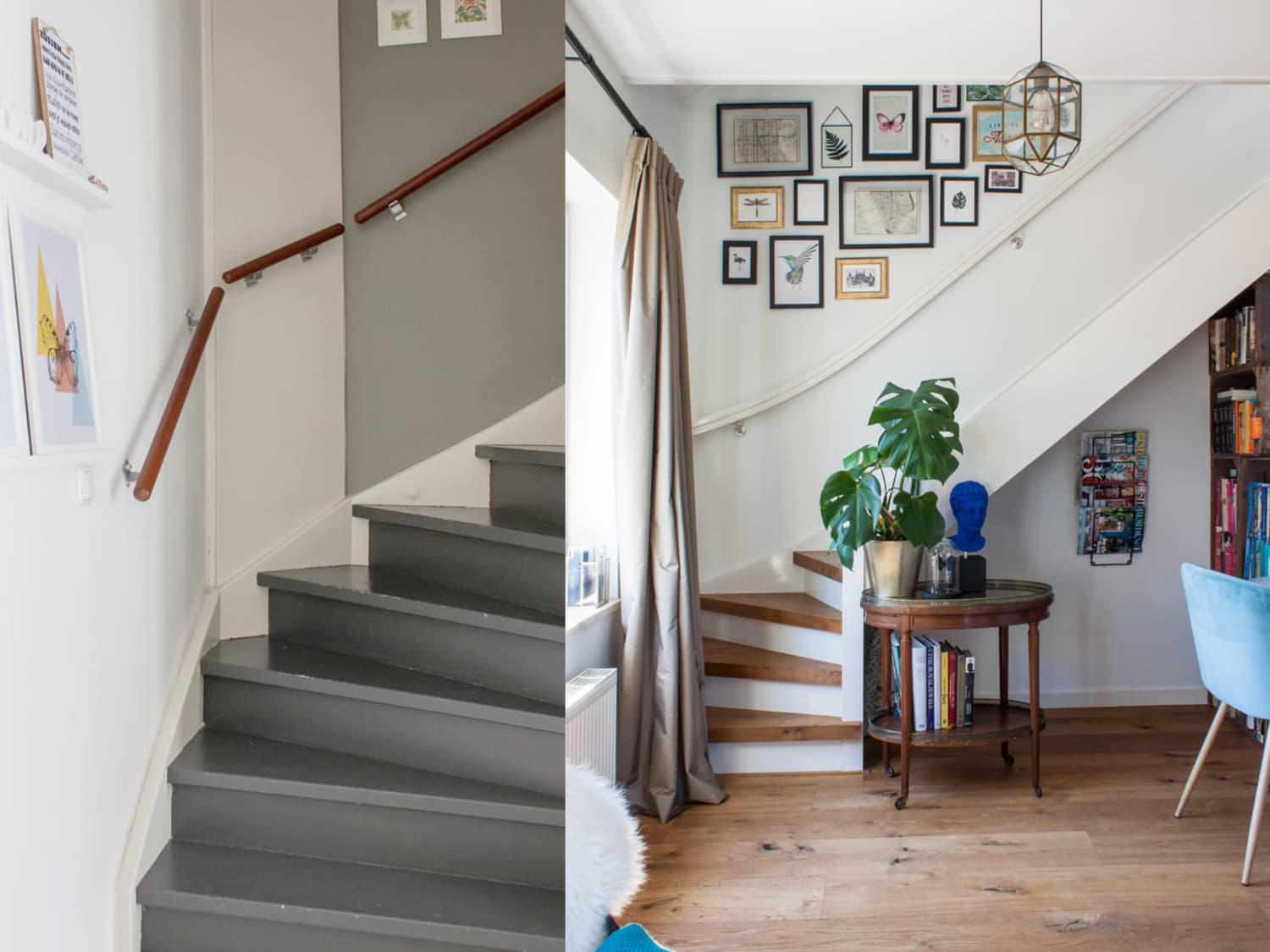
The steep stairs also allowed for more decorative features, like balustrades, to be included in the design. As building techniques and materials improved over time, the need for steep stairs decreased and staircases became less extreme. However, many of these original designs remain today as an iconic reminder of Victorian architecture.
Which country has the steepest stairs?
When it comes to steep stairs, some countries are known for their particularly extreme examples. Italy has some of the most famously steep staircases in the world, with many staircases featuring more than 50 steps and even angles of up to 90 degrees in some places. In the United Kingdom, a number of historical staircases can be found with incredible angles. In Scotland, the Luss Staircase is one of the most extreme, with steps so steep they appear to be vertical. Other countries, such as Spain and Mexico, also have examples of incredibly steep staircases in older homes and buildings.
How do old people make stairs easier?
For elderly people and those with limited mobility, navigating steep stairs can be a difficult task. To make them easier to traverse, there are several options available. Installing handrails is one of the most common ways to make stairs easier for elderly people and those with limited mobility. Handrails provide support and stability when going up or down stairs and can help prevent falls.
Another way to make stairs easier for elderlypeople is to install a chair lift. These are typically electric-powered devices that help people ascend and descend stairs without having to put their full body weight on the stairs. For large staircases, some people may opt to install a stair lift that runs along a track on the staircase itself.
How steep is too steep for stairs?
When it comes to stairs, the steeper they are, the more difficult and dangerous it can be for people to safely use them. This is why there are standards for stair design, including maximum riser heights and minimum tread depths. In the United States, a residential staircase must have a maximum riser height of 7.75 inches and a minimum tread depth of 10 inches. Any staircase that does not meet these standards is considered to be too steep and is a violation of code.
However, older houses often have stairs that are significantly steeper than the standard. This is mainly due to the materials used in older homes and the changing standards of stair design over time.
Is it good to climb stairs in old age?
It is widely known that exercise can help with longevity, so it stands to reason that climbing stairs in old age can be beneficial. However, there are certain risks associated with climbing stairs, particularly in old houses with steep inclines. For starters, the steeper the stairway, the more difficult it is for people to climb, especially elderly people. This can put them at risk of falls or other accidents if they misstep or lose their balance.
Additionally, the steeper incline also means there is less time to react during a misstep, so elderly people might not have enough time to recover their balance and get back on track.
Furthermore, elderly people may have weaker muscles, which can make climbing steep stairs even more difficult.
Are steep stairs a hazard?
Stairs that are too steep are not only difficult to climb, but can also be a hazard. They increase the risk of falls, especially among the elderly and young children. Stairways must meet building codes to ensure safety, and in many areas, stairs must have a certain degree of elevation to be considered safe. This is why the stairs in older homes may seem excessively steep – they were built to meet standards that are no longer applicable. The best way to ensure the safety of stairs in an old home is to have them renovated or replaced by a professional contractor. This process can be costly, but it will provide an important measure of protection.
Ultimately, in most cases, stairs that are too steep are not only inconvenient but can also be dangerous.
Why can old people only climb the stairs slowly?
The steepness of stairs in old houses is often a problem for elderly people and those with physical limitations. The reason why these stairs can be so difficult to climb is that they were built with steeper angles than modern stairs, which makes them harder for the elderly and those with physical limitations to climb. This is because the steeper the stairs, the more energy it takes to climb them.
The problem can be even worse for those with knee and hip problems, where the angle of the stairs can cause more pain and discomfort.
What are the steepest stairs in the world?
The steepest stairs in the world can be found in the Takasugi-an tea house located in Japan’s mountain village of Shirakawa. The stairs, called chozu-bashi which translates to “tea-ceremony bridge,” contain a staircase with an astonishingly steep angle of 37 degrees. The staircase was created by a Japanese carpenter to help the tea house’s owner access his beloved tea garden with ease.
Why are medieval staircases clockwise?
It is widely believed that staircases in medieval houses were designed to be turned clockwise for defensive purposes. The reason behind this belief dates back to the 13th century, when many castles and other fortifications were built with a right-handed spiral staircase. This type of staircase gave attackers climbing to the top of the tower an advantage, since they could swing their sword in a circular motion and hit defenders from multiple angles.
By contrast, defenders had to climb the stairs with a shield in one hand and a sword in the other, making it difficult to defend against attackers. In order to offset this advantage, staircases were designed to spiral in the opposite direction – clockwise.
Can stairs be made less steep?
Yes, stairs can be made less steep in old houses. This is usually done through the process of re-stoning or re-sloping. Re-stoning is a process by which the existing stair treads are replaced with new ones that have a smaller rise and deeper run. This lowers the angle of inclination of each step and makes them less steep. Re-sloping is a similar process but involves changing the shape of the existing treads to make them shallower. Both processes require the help of a professional and can be quite costly, but they can improve accessibility in older houses.
The cost of these projects can vary greatly depending on the size and complexity of the job. It is important to get professional advice before attempting any such project.
Useful Video: Dangerous Staircases | Open House | Ask This Old House
Conclusion
In conclusion, stairs in old houses are often steep for a variety of reasons. It can be attributed to the limited amount of space available and the desire to make the most efficient use of it, as well as the lack of modern materials and technology available at that time. It is also possible that steep stairs were a symbol of status or wealth, as they would have taken more time and effort to build. Regardless of the reason, steep stairs in old houses are a part of history and provide an interesting insight into the past.
References
- https://www.thehealthyjournal.com/faq/why-are-stairs-so-steep-in-amsterdam
- https://housegrail.com/why-are-stairs-so-steep-in-old-houses/
- https://www.karenkingston.com/blog/why-dutch-stairs-are-so-steep/
- https://www.apartmenttherapy.com/dutch-house-stairs-36646446











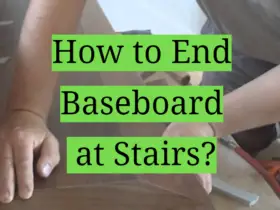

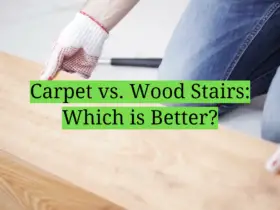
Leave a Reply